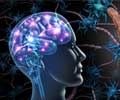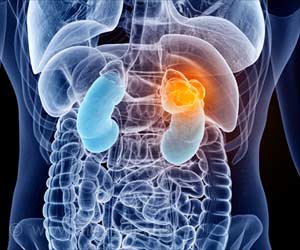American researchers reveal that the drug tetrabenazine (TBZ), used to treat the symptoms of Huntington’s disease can also prevent the death of brain cells in animal models.
American researchers reveal that the drug tetrabenazine (TBZ), used to treat the symptoms of Huntington’s disease can also prevent the death of brain cells in animal models.
The research sheds light on the biochemical mechanisms involved in the disease and suggests new avenues of study for preventing brain-cell death in at-risk people before symptoms appear.“The drug can actually prevent brain cells from dying,” said Dr. Ilya Bezprozvanny, associate professor of physiology at UT Southwestern Medical Center. “It’s much more important than people thought.”
The drug, called tetrabenazine (TBZ), is commercially distributed as Xenazine or Nitoman and blocks the action of dopamine, a compound that some nerve cells use to signal others. TBZ is approved for use in several countries, but not the U.S., to treat uncontrollable muscle movements in Huntington’s and other neurological conditions.
Huntington’s is a fatal genetic condition that usually manifests around ages 30 to 45, according to the Huntington’s Disease Society of America. About one in 10,000 people in America have the disease, with another 200,000 at risk. One of the most famous people with Huntington’s was folk singer Woody Guthrie, who died in 1967.
Huntington’s is caused by a dominant gene, meaning that a person carrying the gene is certain to develop the disease and has a 50 percent chance of passing it on to his or her children. Symptoms include jerky, uncontrollable movements called chorea and deterioration of reasoning abilities and personality. Symptoms begin after many brain cells have already died.
Although a genetic test exists, some people with a family history of Huntington’s choose not to be tested because there is no cure and because they fear loss of health insurance. There are treatments to lessen the symptoms, but there is currently no way to slow or halt the progression of the disease.
Advertisement
The striatum is primarily made up of nerve cells called medium spiny neurons, which undergo widespread death in Huntington’s. One major input to the striatum comes from an area called the substantia nigra, which controls voluntary movements and sends signals to the striatum via nerve cells that release dopamine.
Advertisement
“More research is needed to determine whether this protective effect might also be present in humans, and also whether at-risk people would benefit from the drug,” Dr. Bezprozvanny said.
Clinical trials in humans would be very difficult, however, because trials require many participants and there is no easy way to score effectiveness of a presymptomatic drug, Dr. Bezprozvanny said. Thus, his future studies in animals will look at the effectiveness of TBZ given just after initial symptoms have developed. This situation simulates what would probably happen in a human trial, he said.
Source-Eurekalert
LIN/C







